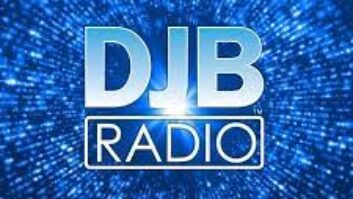
Ben Downs, an owner vocal in the push for AM revitalization, is weighing in with two ideas likely to stir the pot further.
The commission, he said, should consider granting primary status to cross-service FM translators under certain conditions. It’s an idea that could produce a scenario where AM licensees end up choosing between an FM translator and their AM station.
Separately, owners of dual expanded band/standard band licensees should be allowed to keep both on the air until the next AM filing window and be allowed to file for a replacement station.
Downs, vice president of Bryan Broadcasting Licensing Corp. in College Station, Texas, is an AM broadcaster and past member of the NAB Radio Board. Now he is among the many industry people filing comments about the FCC’s further notice of proposed rulemaking. The comment deadline is Monday.
He writes that the FCC should consider granting primary status to cross-service FM translators under certain conditions. This would come after this year’s 250-mile waiver windows and the FM translator application auction window in 2017.
[Read the text of Bryan Broadcasting’s comments.]
To help mitigate noise and interference on the band, he wrote, Bryan Broadcasting “proposes that an AM station that operates a cross-band translator be given the opportunity to surrender its AM license voluntarily in exchange for primary status for the FM translator.”
The secondary status of translators ensures that full-service FMs are protected from interference resulting from relaxed allocation standards. To preserve the protection, Bryan Broadcasting proposes that the conversion to primary status be predicated on a showing that there have been no interference complaints against the translator for a substantial period of time, “such as one or two years.”
Downs says this plan would benefit AMs by allowing them to make a decision as to whether an FM translator would provide better coverage to a community than a daytime-only AM station, for example. “It would also allow the licensee to make a business decision as to the best use of licensee resources: daytime coverage on an AM station as compared to 24-hour coverage on the FM translator, all while ensuring that service would not be lost due to subsequent changes to area or nearby primary FM stations.”
He argues that this will help with band congestion. Stations most likely to advantage of the “surrender option” would be Class D, of which there are 850, almost all with less than 25 watts of power at night. “To the extent that these Class D stations coexist on frequencies originally populated by Class A stations, a reduction in Class D operators could potentially provide a larger area for interference-free listening to Class A stations.” Downs feels that if even half these daytimers take the offer, it’s a lot fewer stations on the AM dial, and most of the frequencies are where the shrinking Class A stations are.
Separately, Downs told the FCC, owners of dual expanded band/standard band licensees should be allowed to keep both on the air until the next AM filing window, and be allowed to seek a replacement station. Bryan Broadcasting is one of the 25 owners that still hold paired stations. Downs said he informally surveyed all the pairs and found that none simulcasts the standard and expanded band stations.
“The stations are all providing unique, and in most cases, minority programming to their communities,” he wrote. “Of the 25 paired groups, 18 stations program non-English language programming and nine of the paired stations provide programs targeted to the African-American community through either music or talk. The remainder are formatted mostly toward niche audiences; there are four Christian formatted, eight sports formatted, seven talk stations, and four music formatted stations among the group of 25 pairs.”
He told the FCC these are serving the public interest, often with programming for niche and underserved audiences, and that it’s unlikely that there would be replacement service anytime soon given lack of demand for new AM stations generally.
Bryan thinks station pairs be allowed to remain on the air until there is a new AM window that would allow the licensees to file for a replacement for the station to be surrendered, and he laid out a proposed divestiture schedule. This, he wrote, “should have no material impact on surrounding stations. Indeed, many of these stations, including [Bryan Broadcasting’s], have been operating on their standard band frequencies for over 50 years. Issues other stations may have had with interference have long been resolved.” (He added this pointed comment: “It also seems unlikely that any interference caused by these 25 paired stations would be significant when compared to the 187,000,000 smart phone chargers in use in the United States.”)
This plan, he argued, would reduce interference while preserving service that communities have come to rely on.
Related:
The Free Ride Should Be Over for Dual Expanded-Band AMs












